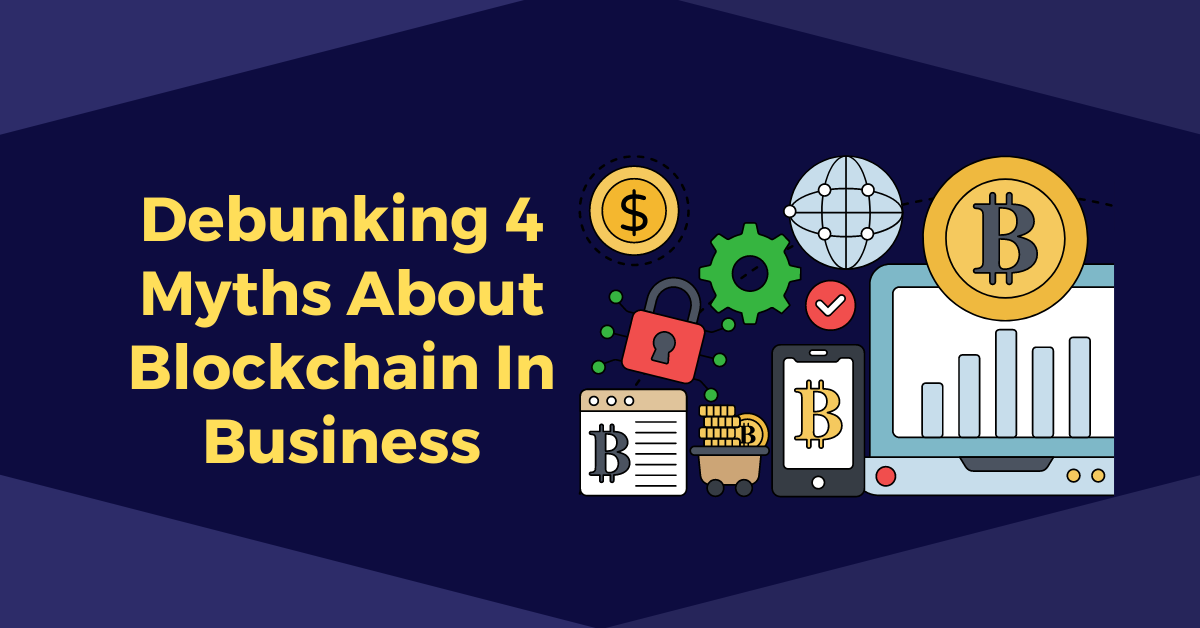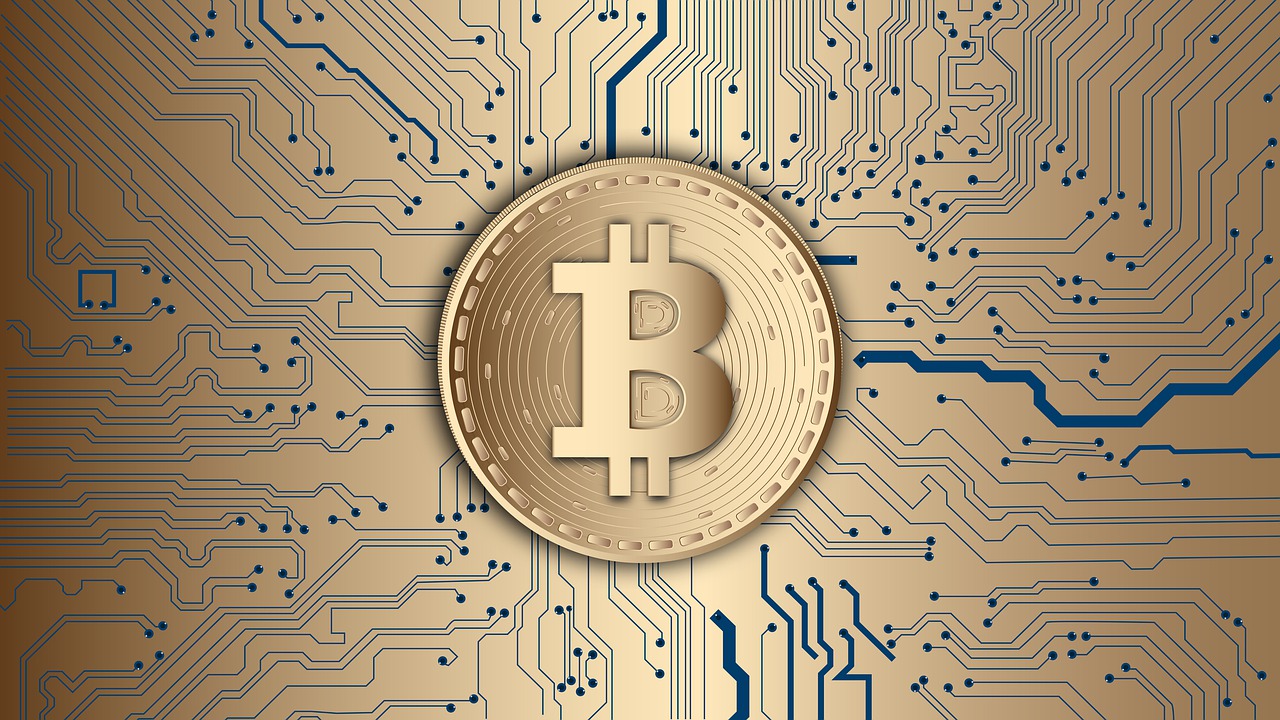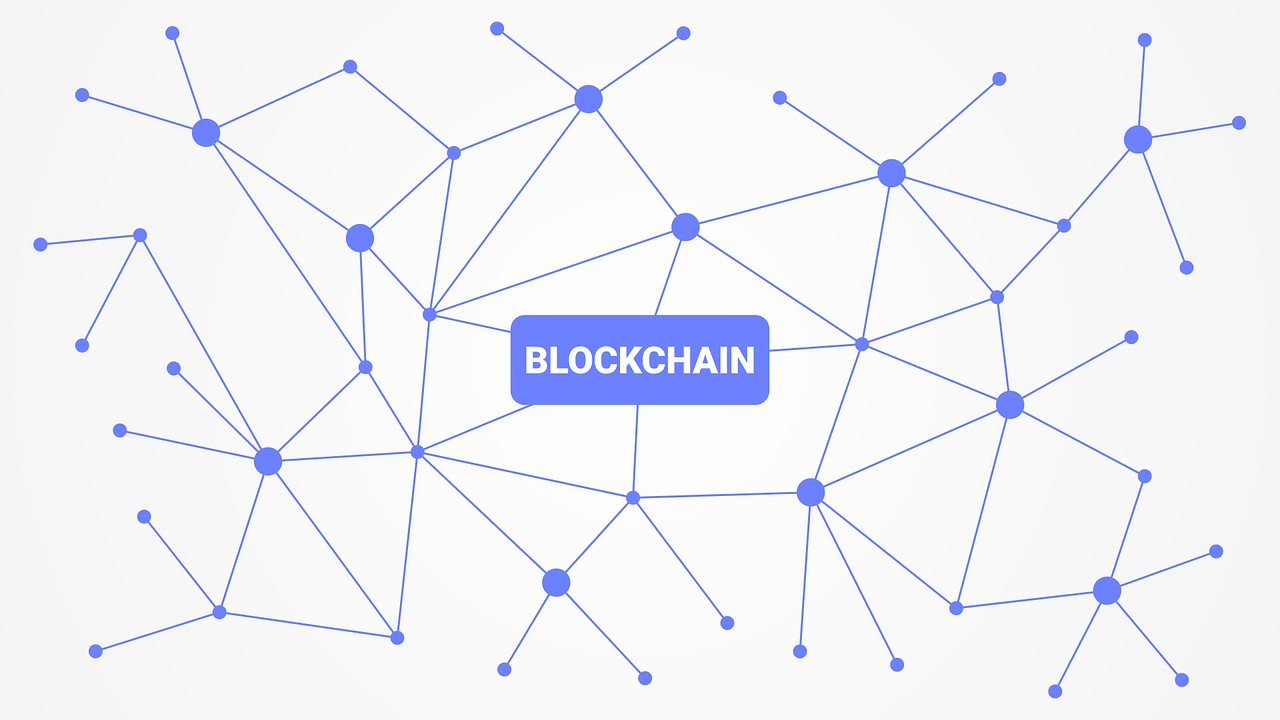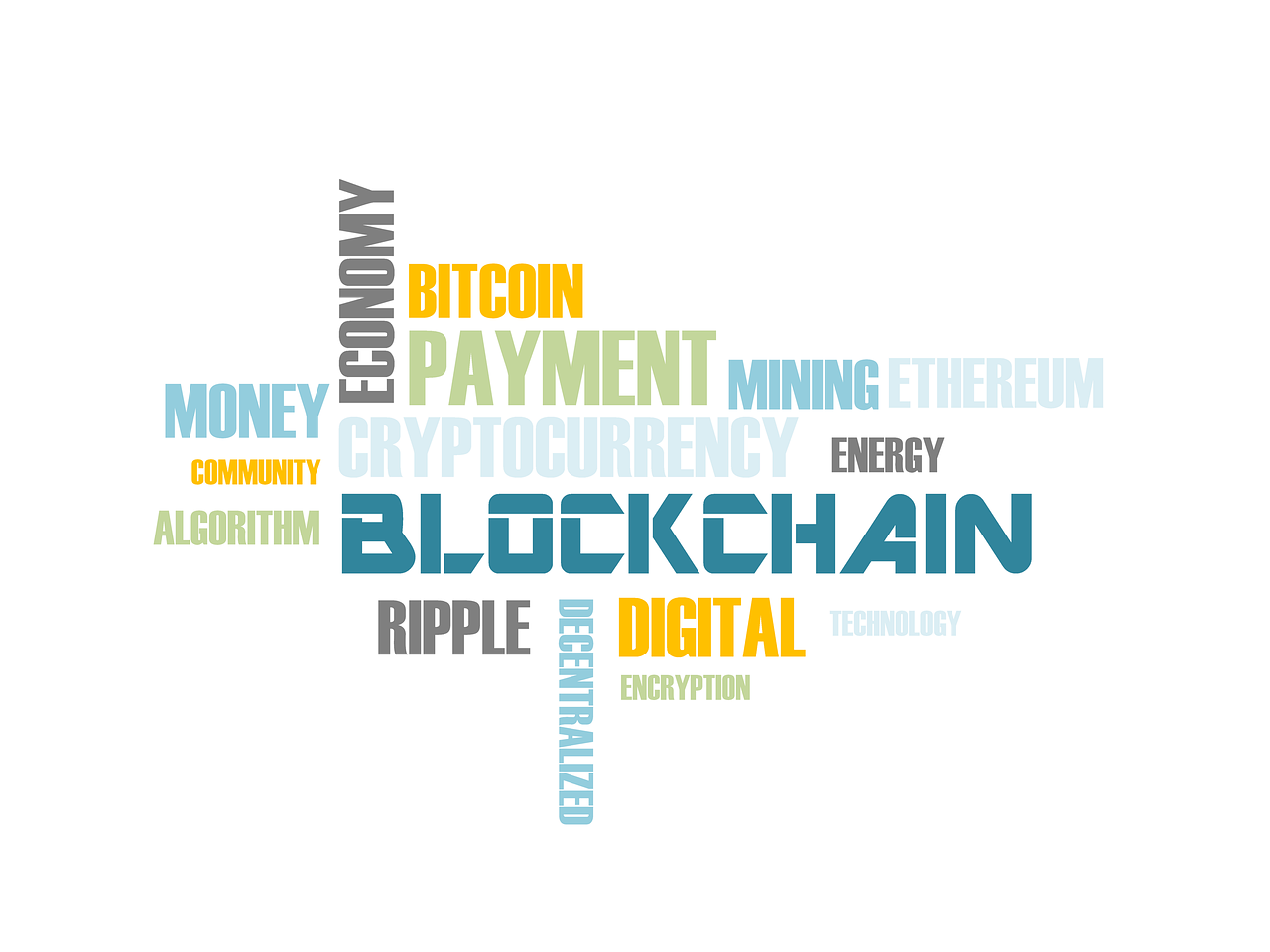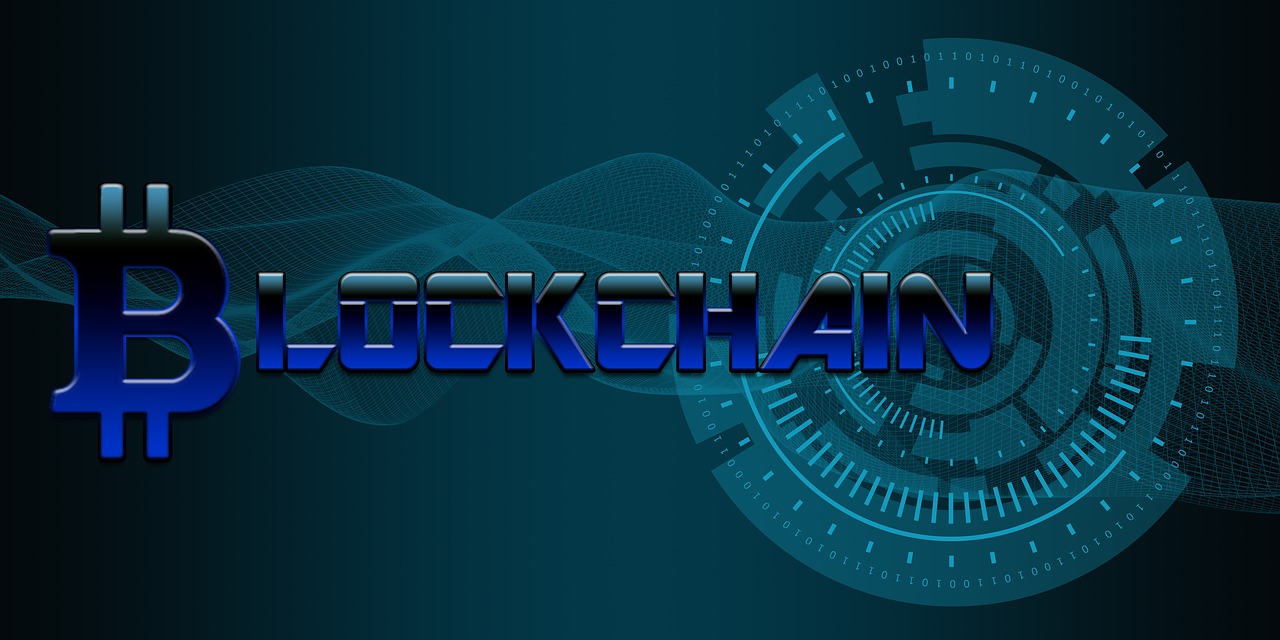In this post, I will debunk business myths about blockchain.
How often do you hear the term “blockchain” used in regular conversation? And how much would you say you know about how this technology works?
Most people today will at least be aware of blockchain as the fundamental technology underlying Bitcoin and most other cryptocurrencies. It’s undoubtedly true that in the years since its inception, blockchain technology has allowed these digital assets to evolve by leaps and bounds.
Crypto transactions utilize faster processes, require fewer transaction fees, and boast tighter security than ever, thanks mainly to developments in blockchain tech. For example, the high-performing privacy coin Monero (XMR) allows a user with access to a Monero wallet to send and receive the currency anonymously.
In recent years, however, blockchain has even begun to make waves in many sectors beyond crypto, such as the healthcare, travel, transport, and shipping industries. Blockchain enthusiasts are confident that the technology has the potential to revolutionize almost every primary industry existing today.
However, as with any emerging technology, a few myths and misconceptions have cropped up over the years around blockchain and its use. Read on for an in-depth exploration of the most common blockchain myths debunked.
Table of Contents
Most Common Blockchain Myths
1. Blockchain Is Simply Another Term for Bitcoin
In essence, a blockchain is a digital ledger or database of transactions that is distributed and stored across a decentralized network of computers.
The individual computers on this network are typically referred to as nodes. Transactions encoded onto the blockchain are duplicated across all the nodes in the network, which then confirm their validity by executing a series of mathematical puzzles.
Validated transactions are grouped into encrypted data units known as “blocks.” Every node on the network has a copy of the blockchain ledger and adds new transactions to this copy in real time.
Bitcoin, meanwhile, is the oldest and most prominent cryptocurrency available today. One of the appeals of Bitcoin and cryptocurrencies in general is that it is decentralized and, therefore, not controlled by entities like banks or governments.
This means it can be exchanged directly between buyers and sellers without intermediaries, as Bitcoin transaction information is recorded on a public blockchain.
Blockchain is frequently identified with the cryptocurrency Bitcoin, but the two are not the same. This misconception has come about partly because Bitcoin’s launch in 2009 marked the first real-world application of blockchain technology.
Though Bitcoin developer Satoshi Nakamoto is often cited as the inventor of blockchain because of this, the foundational idea for the technology was first conceptualized by researchers Stuart Haber and W. Scott Stornetta in 1991.
2. Data on a Blockchain Is Confidential
Because blockchain is commonly touted as a revolutionary technology in cybersecurity, many people assume that data on a blockchain is entirely confidential. This is not strictly the case, as the confidentiality of transactions on a blockchain depends on whether the blockchain is private or public.
Public or permissionless blockchain networks are free for anyone to join, and anyone with access to the network may view its transaction history and even become a node. However, transaction records on a blockchain ledger don’t contain the transaction details.
Instead, transactions are identified with unique public keys that the blockchain generates each time a new transaction is added to the ledger. Hence, transactions on public blockchains do enjoy a measure of anonymity by default.
Private or permissioned blockchains are usually operated by particular entities such as banks or corporations. Users need to be authorized before accessing the network, viewing its information, and adding data to the blockchain ledger. It’s thus possible to restrict people’s access to permissioned blockchains and keep their information private.
3. Blockchain Is Fraud-Proof
The distributed nature of blockchain networks makes it famously tricky for cybercriminals to steal or falsify transaction records. This is because once a transaction is recorded on a blockchain, it’s immediately duplicated across every node in the network.
Cybercriminals attempting to tamper with the data on a blockchain would thus have to access and modify all the network’s nodes rapidly. This is extremely difficult to do without attracting attention.
While blockchain technology is highly secure, it’s important to remember that it is only as trustworthy as the people who operate it. It can’t prevent the people who use it from doing so illicitly, such as when the users who contribute or verify blockchain transactions record fraudulent data for their ends.
Thus, advocates for blockchain also counsel that the technology is implemented alongside educational measures and policies geared toward discouraging dishonesty and disinformation.
Now, let’s move to another entry on our list of blockchain myths.
4. Blockchain Has No Applications Outside Finance
While cryptocurrency is currently the best-known application of blockchain technology, experts frequently attest to its usefulness outside the financial sector.
In this increasingly data-driven world, many believe blockchain’s ability to create, record, and disseminate sensitive information securely could be game-changing for all industries.
Blockchain can potentially improve and accelerate business procedures, with prominent use cases including online voting, shipping and supply chain operations, loyalty programs, and many more.
In my years consulting with businesses on implementing new technologies, I’ve encountered a lot of misconceptions surrounding blockchain. One of the biggest myths is that it’s only for cryptocurrencies. While blockchain was the foundation for Bitcoin, its potential applications extend far beyond. I’ve seen businesses in supply chain management leverage blockchain to track product provenance and ensure authenticity. It’s truly a transformative technology, and businesses that debunk these myths and embrace its potential will be the ones to reap the rewards.
Most Common Blockchain Myths: Frequently Asked Questions
What is the biggest problem with blockchain?
The biggest perceived problem with blockchain depends on who you ask and their priorities. Some common concerns include:
- Scalability: Existing blockchains often struggle to handle high transaction volumes, leading to slow processing times and high fees.
- Regulation: Clear and consistent regulatory frameworks are still evolving, which can create uncertainty for businesses and users.
- Energy consumption: Certain consensus mechanisms blockchains use can be energy-intensive, raising environmental concerns.
- User adoption: Despite growing interest, mainstream adoption of blockchain technology is still early.
However, it’s important to remember that these are challenges, not inherent flaws. Ongoing development addresses these concerns with advancements in scalability solutions, energy-efficient consensus mechanisms, and user-friendly interfaces.
READ ALSO: A Simple Rundown Of Cryptocurrency And Blockchain Technology
What is the most significant risk of blockchain?
Like the “biggest problem” question, the perceived most considerable risk depends on the perspective. Some potential risks include:
- Security vulnerabilities: Any technology can be susceptible to vulnerabilities, and blockchain is no exception. However, the decentralized nature of blockchains makes them inherently more resistant to certain attack types than centralized systems.
- Scams and fraud: As with any emerging technology, there’s a risk of fraudulent projects and scams targeting unsuspecting users. Staying informed and exercising caution can help mitigate this risk.
- Regulation evolving too slowly: If regulation lags behind technological advancements, it could hinder innovation and create uncertainty for businesses.
Why did blockchain fail?
This question is misleading, as blockchain technology hasn’t “failed.” While some individual blockchain projects may have failed due to various reasons (e.g., poor execution and lack of funding), the underlying technology continues to evolve and find new applications. Blockchain is still in its early stages of development and adoption, and while it faces challenges, it holds immense potential for various industries.
What is blockchain’s weakness?
Again, weaknesses are often relative to the specific application and depend on the criteria used for evaluation. Some potential weaknesses of certain blockchain implementations include:
- Limited storage capacity: Some blockchain architectures may limit how much data they can store, potentially impacting scalability.
- Complex technology: Understanding and using blockchain can be technically challenging for non-experts, hindering adoption.
- Forking and governance challenges: Disagreements within a blockchain community can lead to “forks” (splitting the chain), creating uncertainty and potential disruption.
However, ongoing research and development address these weaknesses, and new solutions are emerging to improve scalability, user experience, and governance models.
Why is blockchain a threat?
This statement is often based on misconceptions and fear-mongering. Blockchain technology itself isn’t inherently threatening. It’s a tool that can be used for good or bad, just like any other technology. The key is to ensure its responsible development and use.
What real-world problem does blockchain solve?
Blockchain offers solutions to a variety of real-world problems across various industries. Here are some examples:
- Supply chain management: Ensuring transparency and traceability of goods from origin to consumer.
- Financial services: Streamlining transactions, boosting security, and enabling new financial products.
- Decentralized governance: Powering secure voting systems and citizen engagement platforms.
- Identity management: Providing secure and self-sovereign control over personal data.
- The metaverse: Enabling secure and transparent ownership of digital assets and experiences.
A Final Word On Blockchain Myths
Though blockchain’s rise to prominence is undoubtedly exciting for those interested in technology, it’s more important than ever to be discerning when reading or talking about it.
It’s essential for businesses looking to leverage blockchain solutions to have a clear idea of the technology and how it can be used, as believing myths or misconceptions could have costly consequences.
Disclaimer: Blockchain is still evolving, and its potential applications are constantly expanding. By understanding its strengths and weaknesses, we can foster responsible development and leverage its power to solve real-world challenges and create a better future.
INTERESTING POSTS
- What Is Business Benefits Of The Blockchain Market?
- 4 Blockchain Future Trends You Should Know
- 6 Cybersecurity Myths Busted That You Should Know About
- Difference Between Bitcoin And Bitcoin Cash – Which Is Safer?
- The Best Cyber Security Technology Trends You Must Know
- Blockchain Trends That Are Shaping the Betting Industry
About the Author:
Meet Angela Daniel, an esteemed cybersecurity expert and the Associate Editor at SecureBlitz. With a profound understanding of the digital security landscape, Angela is dedicated to sharing her wealth of knowledge with readers. Her insightful articles delve into the intricacies of cybersecurity, offering a beacon of understanding in the ever-evolving realm of online safety.
Angela's expertise is grounded in a passion for staying at the forefront of emerging threats and protective measures. Her commitment to empowering individuals and organizations with the tools and insights to safeguard their digital presence is unwavering.


